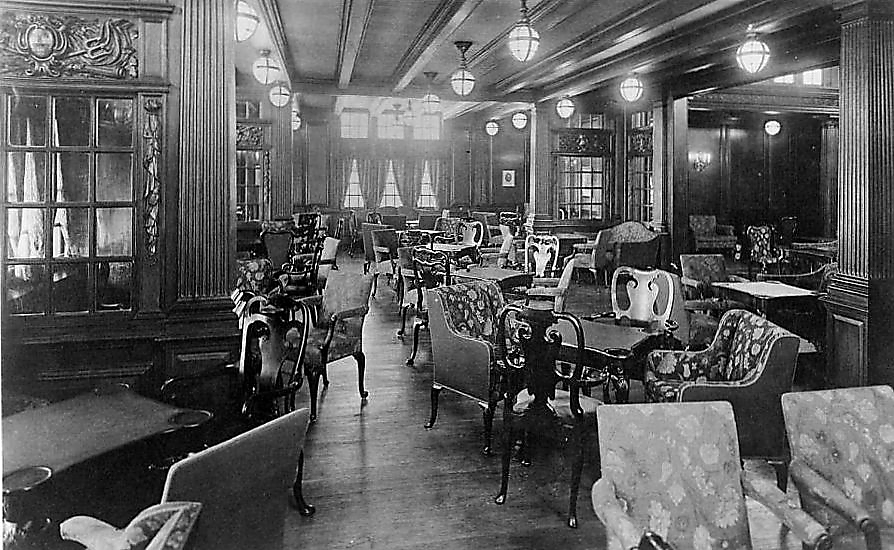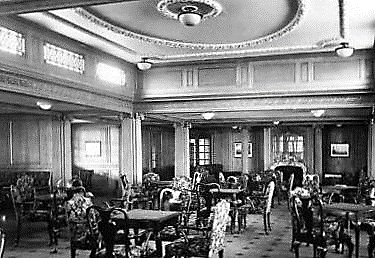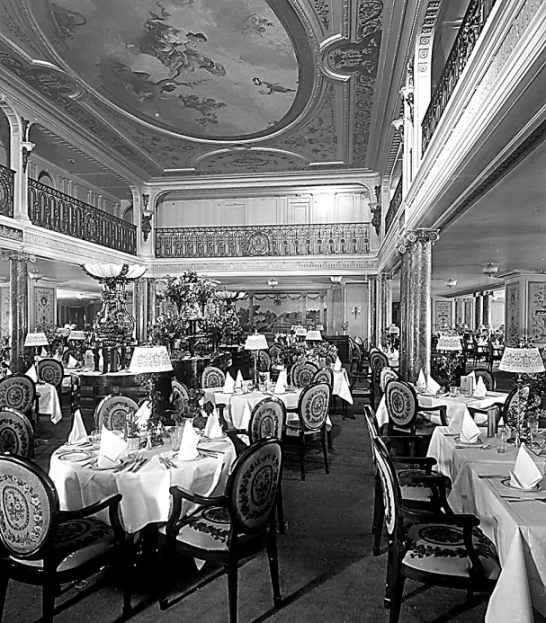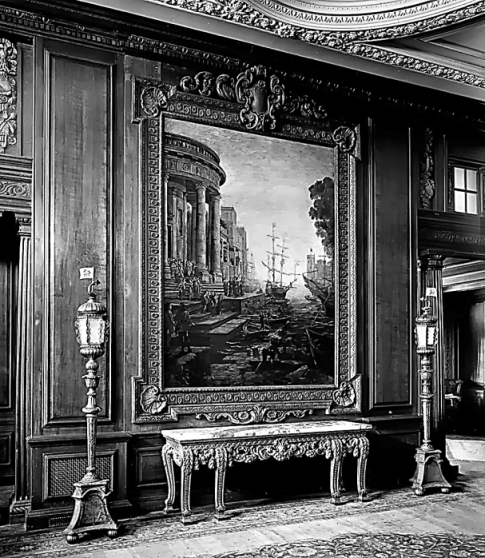RMS Aquitania (1913)
Construction
The Aquitania was designed by Leonard Peskett after he travelled on the RMS Olympic to see how a ship with a gross tonnage of 50,000 would operate.
At the time of her construction, the two largest shipping companies, the White Star Line (WSL) and Cunard, were in fierce competition with each other. Cunard built ships for speed whilst the WSL preferred luxury.
She was built by John Brown & Co. Her keel was laid down in December 1910, under yard number 409. She was 901 feet long with a beam of 97 feet and had a gross tonnage of 45,647. She had 10 Decks and was the last of the four funnelled ships.
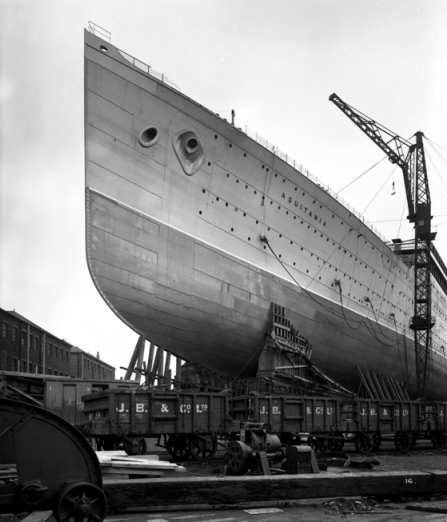
On 21 April 1913, she was launched and christened by the Countess of Derby to a crowd of over 100,000 people.
Leonard Peskett designed the RMS Carmania and he used some of her features in the Aquitania but on a much grander scale.
The Aquitania was the first ship to carry enough lifeboats for all passengers and crew. She carried eighty lifeboats and two motorized boats; one of which were fitted with Marconi Wireless.
Her fitting out took thirteen months to complete. In May 1914, she completed her sea trials and, steaming at a full speed, exceeding all expectations.
On 30 May 1914, she set sail on her maiden voyage to New York under the command of Captain William Turner. She averaged a speed of 23.1 knots and arrived at her destination on 5 June 1914.
Career of RMS Aquitania
After three round trips the Aquitania was converted to an armed merchant cruiser and her First World War service to the Admiralty commenced. In 1915, she was converted into a hospital ship and was the largest of them. She was fitted out with 4,182 beds. She serviced as a hospital ship for two years during the First World War and again during the Second World War in the Dardanelles Campaign.
In 1916, she returned to trooping front duties until 1917, when she was laid up.
In 1918, she resumed troopship service and conveyed North American troops to Britain.
After the war she was refitted as a passenger liner, and her engines were converted to burn oil instead of coal. All her grand fixtures and fittings were lovingly restored. She became one of the most popular transatlantic vessels afloat and proved very profitable for the Cunard Line during the 1920s.
Unfortunately, the Wall Street Crash in 1929 made luxurious travel a rare commodity. Cunard decided to put the Aquitania on the Mediterranean as a “cruise” ship.
When the Second World War broke out, the Aquitania was converted and painted in battleship grey. She was moored at Pier 90 in New York next to the Queen Mary.
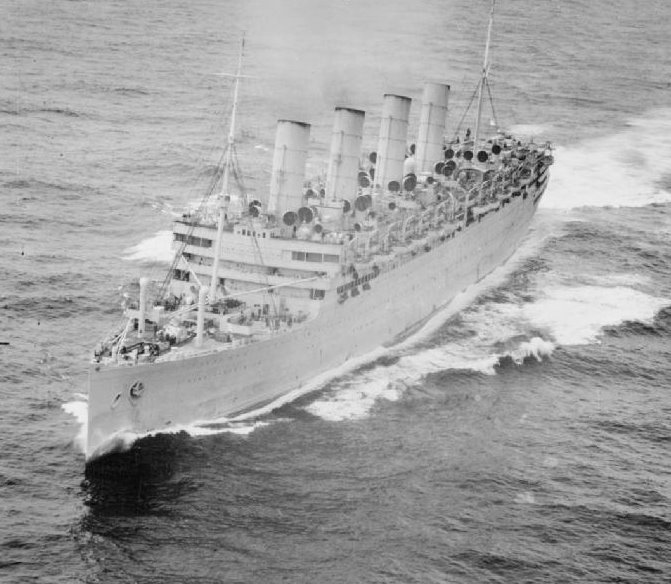
Cunard regained control of the Aquitania in 1946 and was charted to the Canadian government to transport war brides and children to Canada. Following the end of this contract, it was seen that the Aquitania was becoming too expensive to maintain or repair. She was scrapped at Faslane, Scotland in 1950.
Interior of RMS Aquitania
Assisted by his partner, Charles Mewès, Arthur Joseph Davis from Mewès and Davis, mainly designed the Aquitania’s interiors and her public spaces. The company had worked on projects such as the Ritz Hotel in London and Davis had designed the interiors of some banks in London. The Grand Entrance and Lobby were fine rooms.
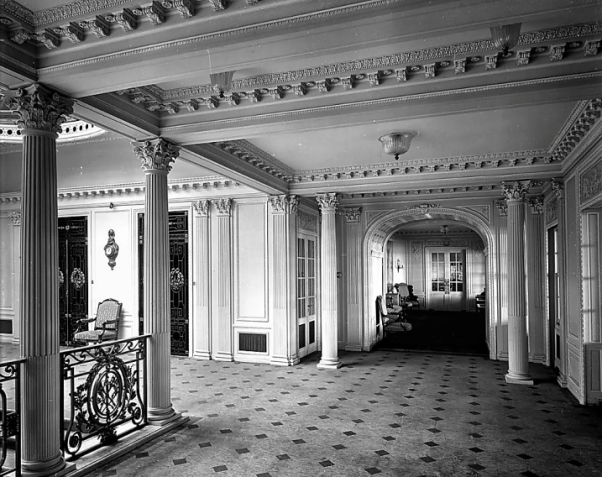
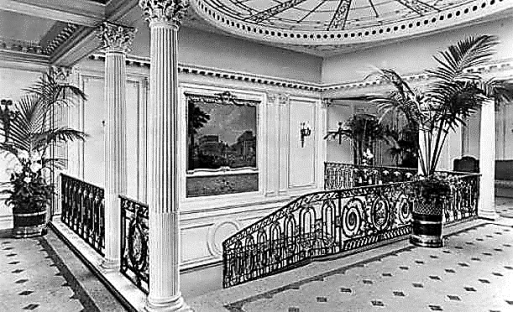
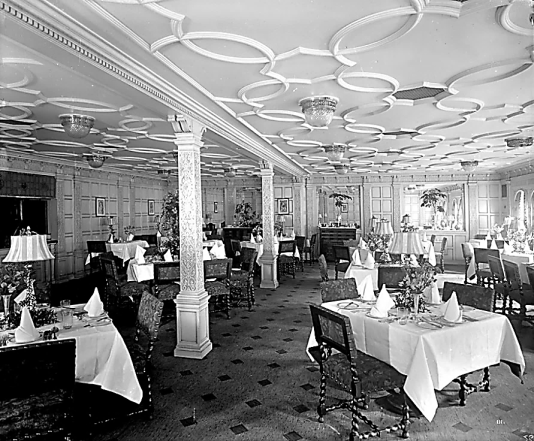
The First Class Drawing Room was decorated in the Adam style. Its features were copied from Lansdown House in London. The walls were adorned with portraits and prints of English seaports. The restaurant was decorated in Louis XVI style and the ship’s Grill Room in Jacobean style. The Garden Lounge stretched 150 feet on either side of the Public Rooms on A-Deck and was designed to resemble an English garden.
The Telegraph wrote on 17 April 1914:
“Apparently there is no limit to the luxuries provided for the Ocean traveller of to-day. He has his gymnasium, his swimming bath, his garden, his library and diversions without number, and now there is the possibility - indeed, it seems almost a probability - that a First Class music hall entertainment will still further relieve the tedium of the days away from land.”